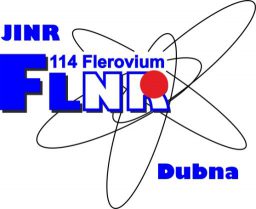About Flerov Laboratory of Nuclear Reactions
Flerov Laboratory of Nuclear Reactions was founded in the Joint Institute for Nuclear Research in 1957.
Outstanding soviet physicist Academician G.N.Flerov was its founder and director for more than 30 years. Now Laboratory bears his name.
Academician Yu.Ts.Oganessian, a well-known scientist who had worked alongside G.N. Flerov, was in charge of the Laboratory from 1989 till 1996. At present he is Scientific leader of the Flerov Laboratory. In 1997, Prof. M.G. Itkis was elected Director of the Laboratory. He is known for his works in the field of nuclear fission. Since January 2007 on Prof. S.N. Dmitriev is Director of the Flerov Laboratory of Nuclear Reactions. FLNR has more than a dozen of scientific discoveries on the credit side which initiated new trends in nuclear physics.
The outstanding achievements in the field of synthesis of superheavy elements of the international staff of scientists, engineers and workers of the Flerov Laboratory of Nuclear Reactions have been recognized by naming Element 105 of the Mendeleev Periodic Table as “DUBNIUM” at the session of the General Assembly of the International Union of Pure and Applied Chemistry (IUPAC), held in Geneva from 22-30 August, 1997.
The last years were marked by the greatest results in the synthesis of super heavy elements in 48Ca induced reactions.
For the first time the experimental evidence of the existence of island of stability of super heavy elements has been got.
Six new superheavy elements with Z=113-118 and more than 50 new isotopes of SHE with Z=104-118 have been synthesized.
On 30 May, 2012 IUPAC approved officially the name “Flerovium“, with symbol Fl, for the element of atomic number 114 and the name “Livermorium“, with symbol Lv, for the element of atomic number 116. Chemical properties of superheavy elements and reaction mechanisms leading to formation of these nuclei, properties of light exotic nuclei (such as 5H, 10He and so on), reactions induced by neutron-rich halo nucleus 6He, spectroscopy of heavy unstable nuclei, exotic fission models and many other problems of low-energy nuclear physics are intensively studied in the Laboratory.
On November 30, 2016 IUPAC officially announced that Elements 113, 115, 117, and 118 were formally named nihonium (Nh), moscovium (Mc), tennessine (Ts), and oganesson (Og). The following names and symbols were officially assigned:
Nihonium and symbol Nh , for the element 113,
Moscovium and symbol Mc , for the element 115,
Tennessine and symbol Ts , for the element 117, and
Oganesson and symbol Og , for the element 118.
Now the Flerov Laboratory is one of the world’s leading scientific centers in the field of nuclear physics. Among about 450 members of the FLNR staff there are more than 150 research scientists (among them 18 Doctors of Science and 65 Candidates of Science (PhD)). To realize Laboratory’s program and original ideas its accelerators and experimental setups are being developed intensively. Four heavy ion accelerators, one electron accelerator and more than ten major multifunctional experimental setups are in effect or under development in the Laboratory.
At present the main project of the Laboratory is DRIBS-III, including the world’s first complex named SuperHeavy Elements (SHE) Factory designed for different aspects of superheavy element research. The Factory complex is based on a new high-current cyclotron DC-280, and several modern efficient setups, including new gas-filled recoil separators for physical and chemical studies, velocity filter SHELS, and others. The SHE Factory complex is under construction now; commissioning is scheduled for the end of 2017.
FLNR carries out research in the field of heavy ion physics in three main directions:
![]() Synthesis and properties of nuclei at the stability limits
Synthesis and properties of nuclei at the stability limits
![]() Accelerator complex of ion beams of stable and radioactive nuclides (DRIBs-III)
Accelerator complex of ion beams of stable and radioactive nuclides (DRIBs-III)
![]() Radiation effects and physical bases of nanotechnology, radioanalytical and
Radiation effects and physical bases of nanotechnology, radioanalytical and
radioisotope investigations at the FLNR accelerators

Leave a Reply